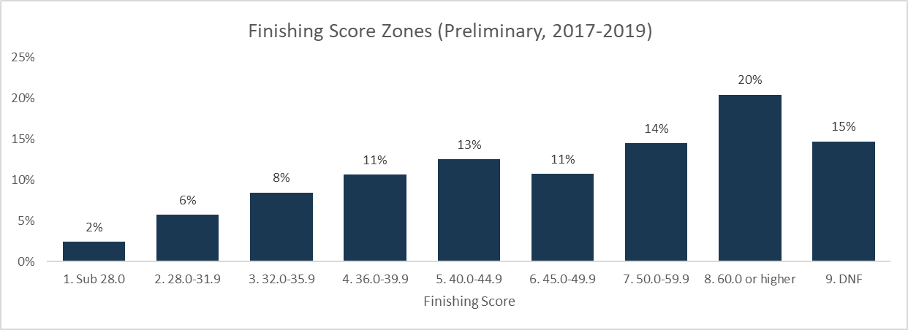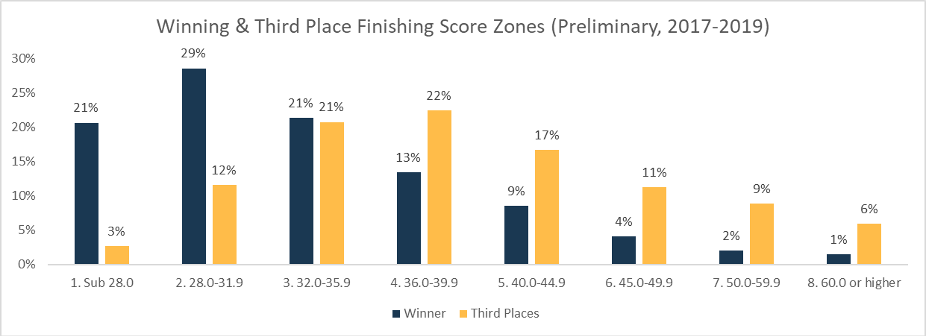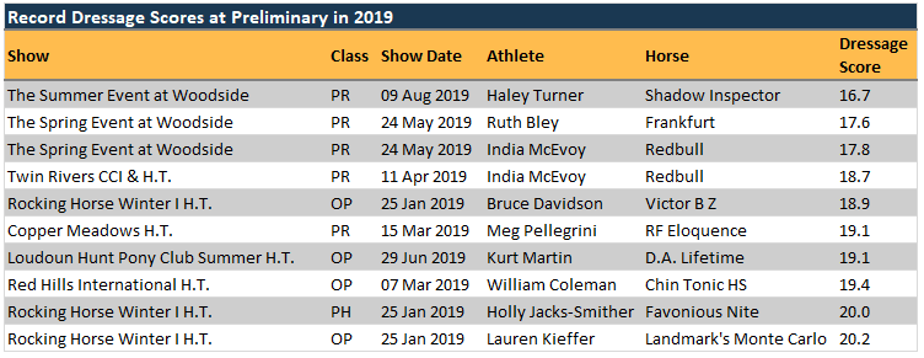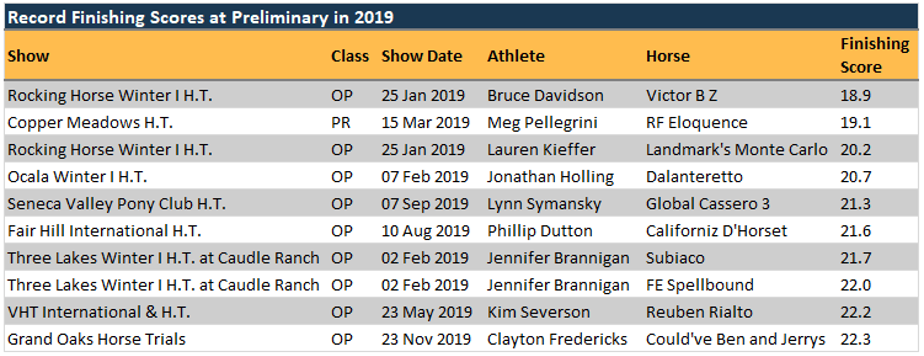Renew Your USEA Membership for the 2023 Season Today LEARN MORE

How competitive have your Preliminary results been, where do you stand among your peers, and what scores should you be aiming for if a top finish is your goal? EquiRatings takes a statistical look at the USEA Preliminary level to help you evaluate your game. Stay tuned for the rest of the levels as they are released monthly!
Our first go-to is Zone Analysis. Zone Analysis is a great way to see how people are scoring, both overall and per-phase. Use these graphs to evaluate how you’ve been scoring relative to your Preliminary peers. We get you started with a few bullet-point takeaways below.


Finishing Score Zones
Per-Phase Zones
Note: The Show Jumping Zones and the Cross-Country Zones include time and jumping penalties.
We all know that eventing is about putting all three phases together to finish strong, but what is a strong finish? What does it take to earn a top placing and how does a performance in a single phase affect your overall competitiveness? Here we show you the results achieved by first and third place finishers so you know what a top performance looks like.

What does a strong start look like at the Preliminary level?
|
Final Position |
Average |
Started as |
Started 10 Marks or Less from Dressage Leader |
Started More Than 10 Marks From Dressage Leader |
|
Winner |
30.0 |
37.0% |
60.6% |
2.4% |
|
3rd Place |
32.9 |
8.0% |
77.8% |
14.2% |
Using 2017 – 2019 Prelim data.
Can you afford to knock a pole?
|
Final Position |
0 Show Jumping Penalties |
1 to 4 Show Jumping Penalties |
5 or More Show Jumping Penalties |
|
Winner |
73.0% |
19.3% |
7.7% |
|
3rd Place |
50.7% |
30.8% |
18.5% |
Using 2017 – 2019 Preliminary data. This table includes show jumping time penalties and jumping penalties.
|
Final Position |
Clear Inside the Time |
Average Cross-Country Time Penalties |
|
Winner |
54% |
2.2 |
|
3rd Place |
33% |
4.7 |
Using 2017 – 2019 Preliminary data.
Lastly, we have pulled the 2019 Preliminary record dressage scores and record finishing scores. There are some recognizable names on these lists but also some combinations who may not always make the eventing headlines. Take a look – these numbers might be your reach goals!


Looking at these types of peer analyses allows you to gain clarity and set measurable targets. Measurable targets are so valuable! They help you purposefully improve by working toward a concrete target and gauging your progress toward the bullseye. Of course, long-term goal-setting is not about comparison; you have to stay in your lane or risk being robbed of fulfillment. But these comparison metrics do help you locate yourself among your peers so you know where you stand. From there, you can set realistic targets that can serve as rewarding stepping stones in your journey.